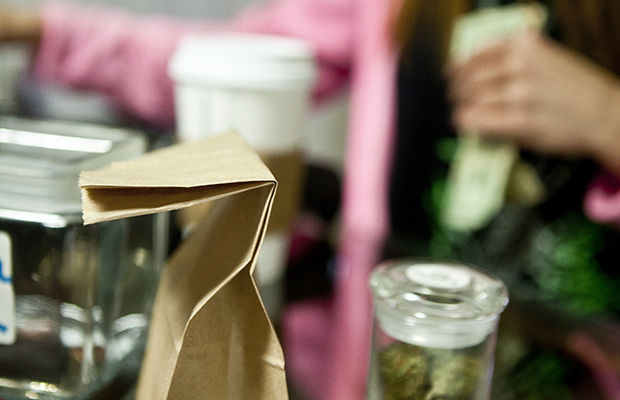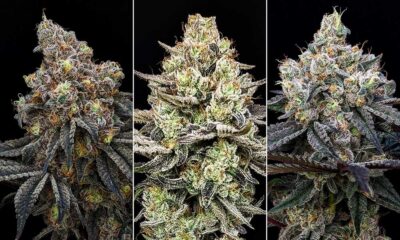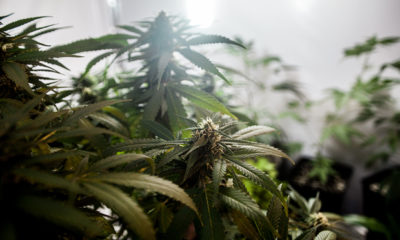
Economics
Oregon Tops CO & WA in First Week of Retail Sales
On October 1, Oregon began legal sales of adult-use cannabis at dispensaries across the state due to the passage of Ballot Measure 91 during the midterm elections last year. Recreational sales were first legalized in the state on July 1, but customers had to wait for a few months while lawmakers smoothed out the rest of the legislation to be able to purchase cannabis at a storefront.
According to reports, dispensaries brought in almost $11 million dollars in recreational sales between October 1 and October 6. The sales figures were gathered by the Oregon Retail Cannabis Association (ORCA). Casey Houlihan, the executive director for the ORCA, shared that the very first day brought in nearly $3.5 million, blowing the total first-day sales of both Washington and Colorado out of the water.
Colorado finished its first week of recreational sales with $5 million, and Washington sold a total of just under $2 million. While both of these are fantastic for the tax income for the respective states, Oregon’s opened its first week with unprecedented results, making well over both states’ combined income.
“It’s exciting,” a customer named Peter told KGW. “It’s just really weird, it feels like it’s not even really happening to be honest, it’s really bizarre.”
Oregon has a much smaller population than either Colorado (5.36 million) or Washington (7.06 million), with only 3.97 million citizens and only about half of the cities and counties allowing for recreational sale. Additionally, the average prices for a gram of cannabis at Oregon dispensaries is lower than Colorado or Washington, with started prices anywhere from $20-30 per gram. Oregon’s first week saw a gram of legal marijuana priced very reasonably, ranging from $5-15 per gram depending on the strain.
According to the Oregon Cannabis Connection, the state had estimated that they would receive about $9 million in tax revenue for the entire year of 2017, which would mean that statewide sales would be about $40 million yearly. This unexpected first week of sales has forced lawmakers to readjust their expectations for the upcoming tax years; they now expect to make about three to four times as much in tax revenue from recreational sales.
How can a state with a lower population, cheaper prices and a limited number of cities and counties to buy cannabis make this much in the first week of sales alone? The answer is due in part to the number of already-existing infrastructures that were ready and willing to begin selling.
Colorado began its recreational sales with 24 dispensaries; Washington began with only about four total. Oregon, on the other hand, began their recreational sales with almost 280 medical marijuana dispensaries already open for business and ready to begin.
“When Washington went legal they had a limited amount of recreational stores selling a limited amount of product,” explained Taylor Choyce, co-owner of The Green Shelf in Ellensburg, Washington. “In Oregon, there were already hundreds, if not thousands of medical dispensaries that are now able to sell to the general public. That’s why Oregon has done more initial sales than Washington did.”
For the rest of the year, anyone who purchases recreational cannabis in Oregon can do so tax-free. Due to this, the ORCA is currently the only association that has the ability to track the number of legal sales made across the state.
Starting on Jan. 1, 2017, there will be a 25 percent tax added to each recreational sale made. and the funds collected will be used to support necessary structures in the state. Specifically, 40 percent of collected recreational sales tax will be used to support public school systems and 25 percent will be used for public health services.
Once the state begins collecting taxes from recreational marijuana sales, the Oregon Liquor Control Commission will take over tracking the sales. However, this responsibility won’t switch over from the ORCA until the Commission begins to issue licenses themselves next year.
But even though the state isn’t collecting taxes on the sales yet, the new recreational industry has actually already helped in keeping current marijuana dispensaries afloat. For example, the medical dispensary Fresh Buds was attempting to stay open for business while only serving about 15 medical patients a day.
“There for awhile, towards the end we were thinking we might have to close the doors because we weren’t getting any kind of steady business,” said Rachel Clark, an employee at Fresh Buds.
While there are still some legal issues being ironed out by lawmakers, the current laws state that anyone over the age of 21 may purchase up to a quarter of an ounce (about seven grams) of cannabis in one day from a legal dispensary. Additionally, adults will have unlimited access to seeds, can possess up to eight ounces in their home, one ounce in public and grow up to four plants. Currently edibles are unavailable simply due to a lack of legislation from the state.
Overall, Oregon seems to have jumped up as the frontrunner for recreational sales among the four legal states. With such a turnout in just the first week and the rest of year tax-free, it is very possible that Oregon can make a large amount of income from these sales and possibly even set a fantastic precedent for other states to follow if and when they choose to legalize recreational cannabis sales themselves.
Do you think Oregon will top Colorado’s annual cannabis revenue as well? Tell us in the comments.
























